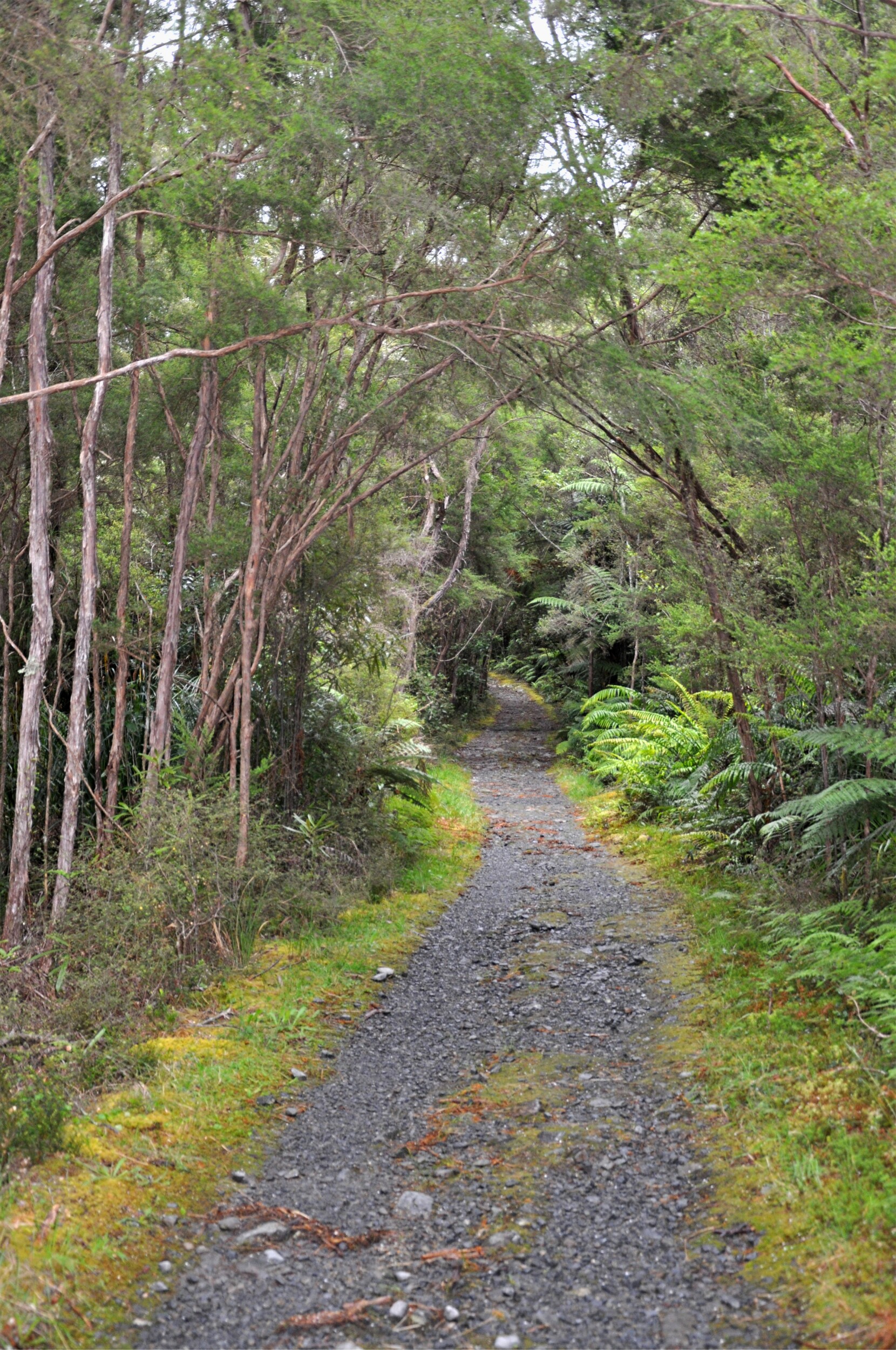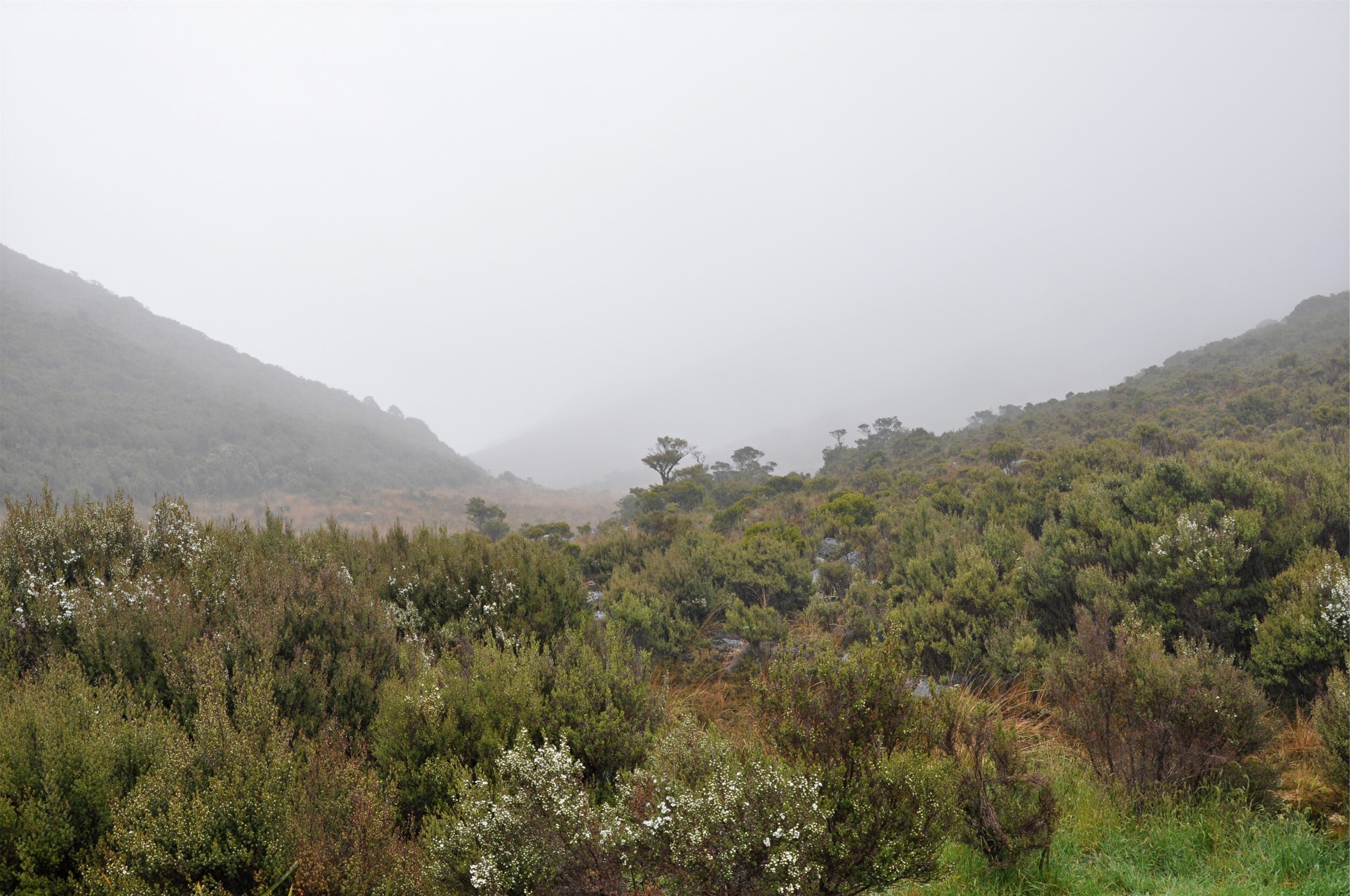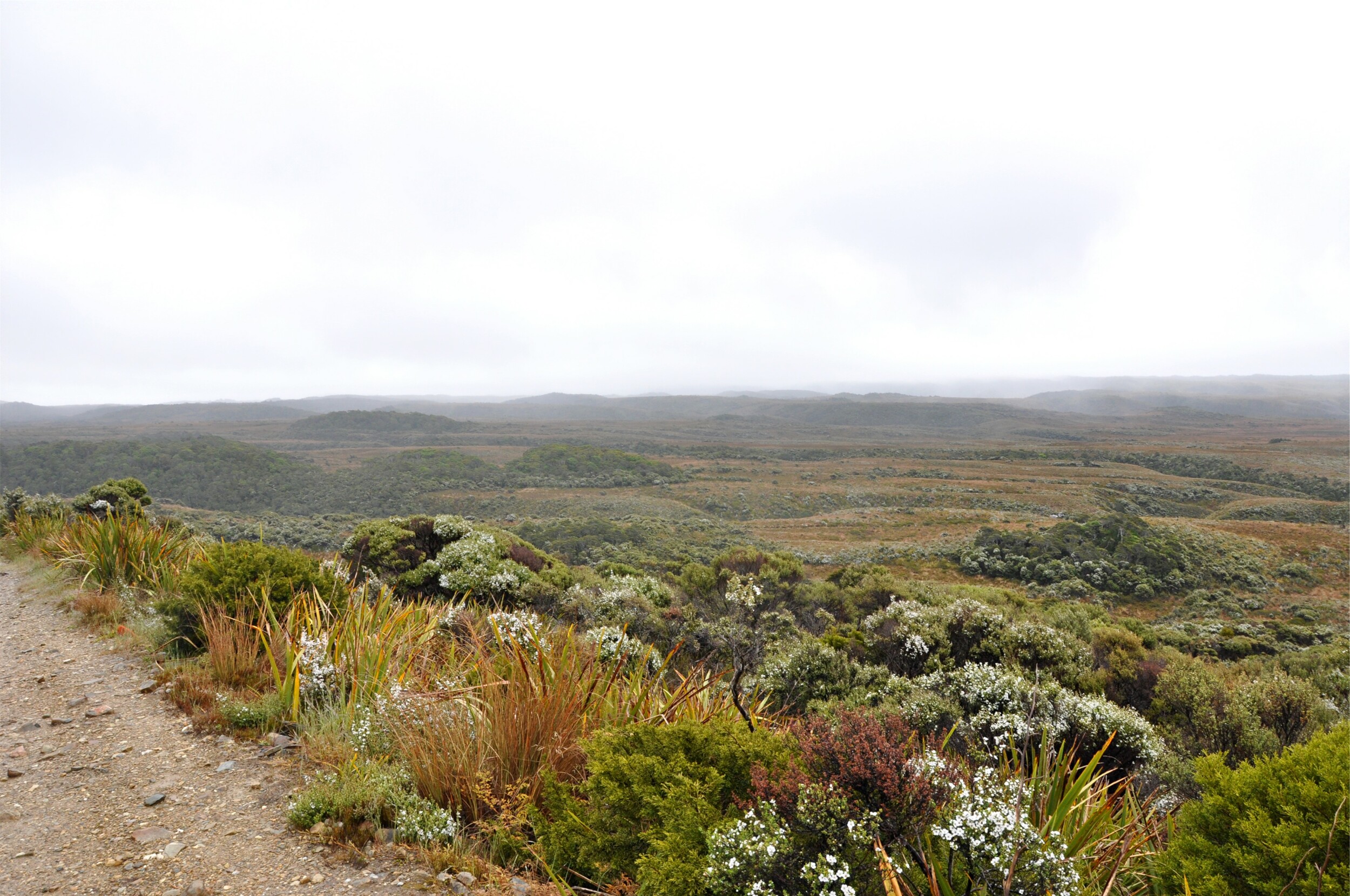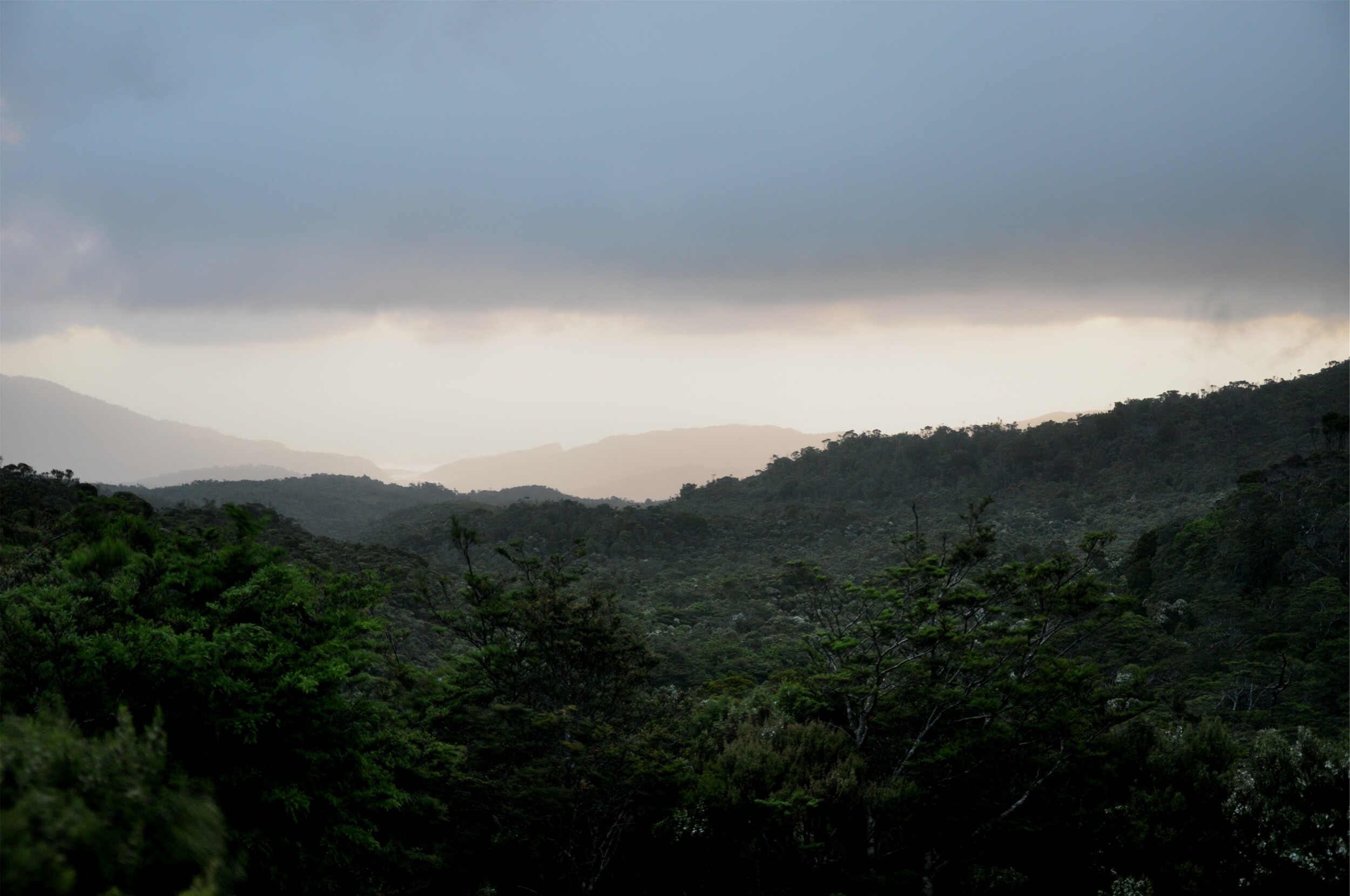With our hiking plans last year somewhat derailed by my broken ankle, it seemed an obvious choice to try and rebook for this year. With some careful planning and very carefully timed monitoring of the Department of Conservation website, we were able to get our first choice of dates and walking tracks for this summer.
The plan was to tackle two of the Great Walks on the South Island, with a couple of days in between for some sightseeing and a bit of rest and refueling. Our first track was the Heaphy Track, the longest of the Great Walks, which cuts across a remote section of the northwestern tip of the South Island.

Although the track itself is just under 80 kilometers long, the start and end points are over 450 kilometers apart by road. Not surprisingly, the logistics are perhaps the most daunting part of the entire journey. We took our time driving up to through the mountains to Golden Bay and after stopping for dinner we made our way to the first hut on the track, just a five minute walk from the car park, next to the Aorere River.

Despite Golden Bay being known as one of the sunniest places in New Zealand, we woke to grey skies and light drizzle. With bad weather in the forecast we knew it made sense to start our hike early with the hope that we could arrive a the next hut before the worst of the rain hit. The track climbed steadily up through the forest, providing some shelter from the weather and allowing us to make good progress.

Through the occasional breaks in the forest we were able to keep track of our progress against the Aorere River below us. With visibility rapidly decreasing, we decided to skip the detour to the scenic view point and not long after were pleasantly surprised to see a marker indicating we were just a kilometer away from the hut.

Reaching the saddle, we found ourselves at bush line, and with it, the start of Gouland Downs where we would be hiking the next day. We arrived at the hut as the heavy rain started to set in and were glad for a space to dry our clothes while we enjoyed a late lunch.

After lunch, whilst we were relaxing in the hut, we heard a strange noise outside and went to investigate. To our delight there was a Takahe wandering around outside. Takahe are one of the rarest native birds in New Zealand with just under 450 left, of which fewer than half are in the wild. The Takahe we saw was part of a small programme that began in 2018 when a group of thirty birds were released into this area. We had heard about the Takahe conservation programme here, but were amazed that we were able to actually see one in the wild. Leaving the Takahe to continue snacking on the grass and seeds outside the hut, we went back inside to enjoy dinner in the warmth of the hut.

The next morning, the low cloud lingered and with the forecast once again set for the weather to deteriorate, we decided to head out straight after breakfast for the next stage of our hike. One of the unusual features of the Heaphy Track is that the landscape changes every twenty kilometers or so, and with our chosen huts at approximately the same intervals, we knew we would have different scenery each day.

On our second day, the track took us across Gouland Downs, a relatively flat upland basin, covered in low bush and scrub. Significantly different from the forests of the previous day, it looked quite eerie in the heavy mist.

Partway across the Downs, we passed through a lush forest, the river valley and limestone outcrop had resulted in a beech forest that was covered in moss and lichen. It seemed that in every direction there was a different shade of green, some of which were almost iridescent even on such a grey day.

As we left the small section of forest behind, the rain started to get much heavier and the predicted winds also picked up. Putting the camera away, we focused on completing the next section of track to our hut for the night. The water levels in the streams and rivers were starting to rise and in one section the boardwalk that was installed to carry hikers over a marshy section was submerged to well over our ankles. Not long after we came to the sign letting us know we were just a couple of kilometers away from the hut, giving us a fresh burst of energy to make it to the dry hut. Before reaching the hut, we came to another flooded section of trail and ended up wading through a thankfully slow moving stream that was well over our knees!

Our eagerness to get out of the bad weather meant we arrived at the hut in time for lunch and were able to start the process of drying ourselves and our things out whilst we listened to the storm blowing outside the hut. By late evening the clouds started to lift, and as we looked out to the setting sun in the west, we could just make out the mouth of the Heaphy River where we would be staying the next night.
